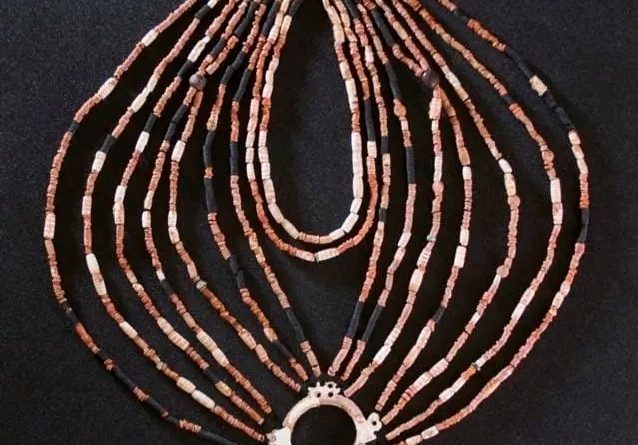The 9000 Years Old Necklace, by Kelechi Deca
The 9000 Years Old Necklace, by Kelechi Deca
Two days ago Dr. Obinna Aligwekwe wrote about how some people believe the world is about 6000 years old. And I find it amazing that some people actually think so.
I think why many people find it hard to soak in how aged the world is has a lot to do with inability of our minds to properly absorb the vastness of such assumptions.
First time I was at the Pyramids at Giza, I asked my guide about the age of those monstrous structures. I was informed that all three of Giza’s famed pyramids were built during a frenetic period of construction, from roughly 2550 to 2490 B.C.
Then thinking of the Great Wall of China could simply stop the mind momentarily from working. To imagine that the construction lasted for more than 2,000 years, from 770-476 B. C.and Warring States 475-221B.C. That such structure could be built thousands of years before the birth of Christ is too much for some people to embrace.
Just recently, archaeologists found the body of a child from around 9,000 years ago buried with thousands of beads in what is now Jordan.
Of the more than 2,500 beads counted in the grave – some made of calcite, some made of turquoise, and some made of hematite – most were stained red, and they spilled across the child’s chest and neck.
Among the mess, there was a faint yet perceptible pattern. For every series of 10 beads shaped like discs, researchers noticed two nearby beads shaped like tubes.
Such a careful arrangement would have required the beads to be strung, possibly sewn into the child’s clothing or hung on a body part.
Based on the shape of the child’s jaw, she was probably a girl roughly 8 years of age, according to archeologists from Côte d’Azur University in France..
The beads are one of the only clues as to who she was and what her society’s culture was like, suggesting that the people who once lived in this Neolithic village, known as Ba`ja, took great care to bury their children.
Behind the child’s neck, they uncovered a mother-of-pearl ring and a double-perforated pendant with several beads still connected.
Bead by bead, scientists have put the spectacular ornament made with multiple strands of carefully placed beads back together.
According to the archeologists, the huge volume of beads, their complex organization, and their harmony and beauty are reminiscent of later ornaments that show up in Mesopotamia and Egypt.
In this much older Levant village, the necklace stands out.
“Despite its elaborate design, such a necklace was not created for exchange or trade purposes but was rather a part of the child’s burial, serving as a significant testament to the cultural practices of the time” the researchers said.
Ba`ja was probably occupied between 7400 and 6600 BCE, and even though the village is small, it is dense with archaeological remains.
Many people still find it hard to comprehend dates outside the Common Era (CE). The Common Era (CE) and Before the Common Era (BCE) are alternatives to the original Anno Domini (AD) and Before Christ (BC) notations used for the same calendar era.
The two notation systems are numerically equivalent: “2023 CE” and “AD 2023” each describe the current year; “400 BCE” and “400 BC” are the same year.
The dating system was invented by Dionysius Exiguus in 525 CE. By the way, there is no year 0 in the Anno Domini dating system. The year 1 BCE immediately precedes the year 1 CE. Or, if you prefer, the year 1 BC immediately precedes the year AD.
Ụwa akaala nka…




